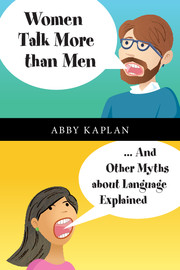Book contents
- Frontmatter
- Contents
- List of figures
- List of tables
- Acknowledgments
- 1 Introduction
- Part I … But is it language?
- 2 ‘A dialect is a collection of mistakes’
- 3 ‘Sign language is skilled charades’
- 4 ‘Chimpanzees can talk to us’
- Part II Language learning
- Part III Language in use
- Appendix A Statistics brief reference
- Language index
- People index
- General index
3 - ‘Sign language is skilled charades’
from Part I - … But is it language?
Published online by Cambridge University Press: 05 April 2016
- Frontmatter
- Contents
- List of figures
- List of tables
- Acknowledgments
- 1 Introduction
- Part I … But is it language?
- 2 ‘A dialect is a collection of mistakes’
- 3 ‘Sign language is skilled charades’
- 4 ‘Chimpanzees can talk to us’
- Part II Language learning
- Part III Language in use
- Appendix A Statistics brief reference
- Language index
- People index
- General index
Summary
When I was a small child I used to play with the girl next door. She didn't understand anything I tried to tell her, but it didn't matter. We played together all the time, using simple gestures to communicate. I thought something was wrong with her, but I adapted easily to her limitation.
One day when I was about four, I went inside her house. As I stood there, her mother came downstairs. Nothing happened between her and the girl that I could see. Then I saw her mother point at the doll house in the hallway. The girl ran and moved the doll house back into her room, as if she had just been told to do so. I was astounded. I knew it was different, something different. I knew they had communicated, in a form I couldn't see. But how? I asked my mother about what I had seen.
‘They are called “hearing”,’ she explained. ‘They don't sign. They are hearing. They are different. We are Deaf. We sign.’
I asked if the family next door are the only ones, the only hearing people.
My mother shook her head. ‘No’, she signed, ‘it is us that are alone’.
I was very surprised. I naturally assumed everyone was like me.
This childhood experience of Sam Supalla, recounted in Perlmutter (1986, 515), vividly illustrates the fact that sign language is a living language for many people, just as spoken language is for many others. When hearing people think and talk about language, we usually mean spoken language – and it's easy to understand why, because the majority of human languages are in fact spoken. But it's also true that deaf individuals use sign as a medium for communication that is every bit as rich and expressive as speech.
Nor is sign limited to people who are deaf. Until the twentieth century, for example, a sizeable proportion of the population onMartha's Vineyard (a small island off the coast ofMassachusetts) was deaf. The community used their own sign language – different from American Sign Language (ASL) – which was known by deaf and hearing individuals alike. Martha's Vineyard isn't unique; there are similar situations in small communities around the world, some of which are described in Perlmutter (1986). Apparently, once the number of deaf people reaches critical mass, the entire community will adopt signing as a second language.
- Type
- Chapter
- Information
- Women Talk More Than Men... And Other Myths about Language Explained, pp. 31 - 51Publisher: Cambridge University PressPrint publication year: 2016



